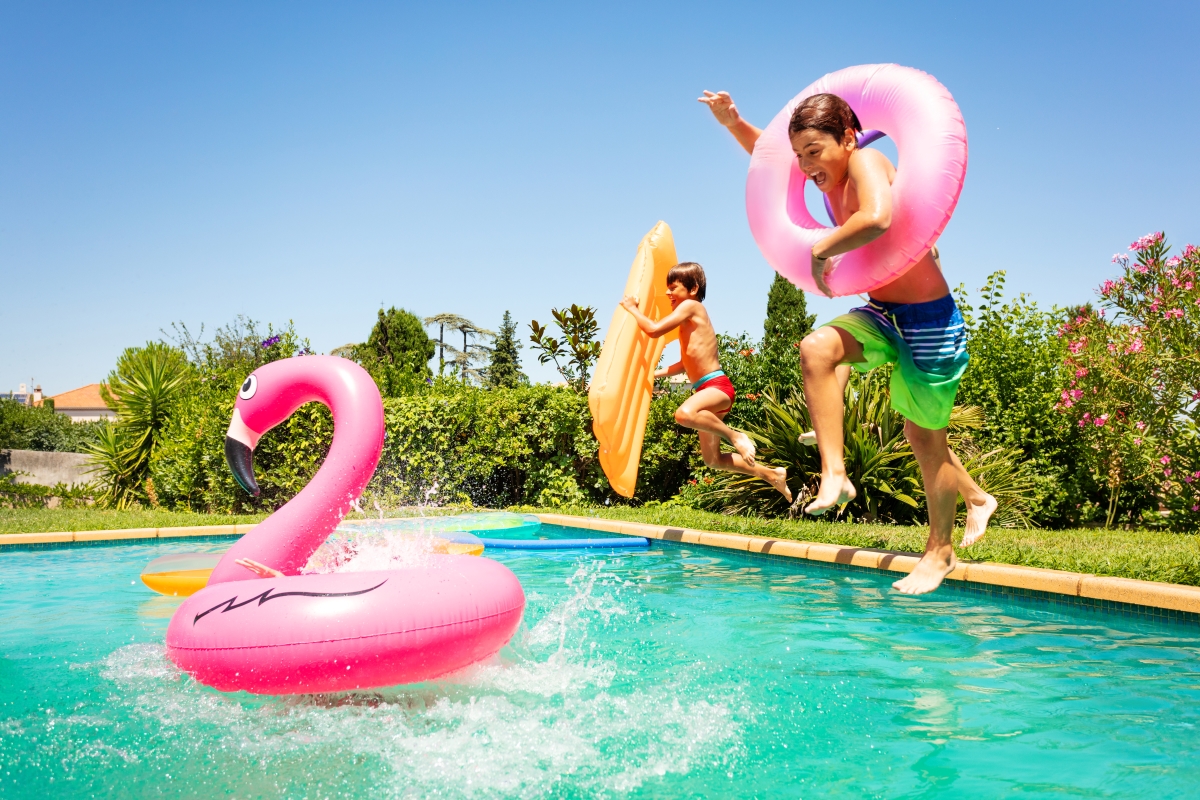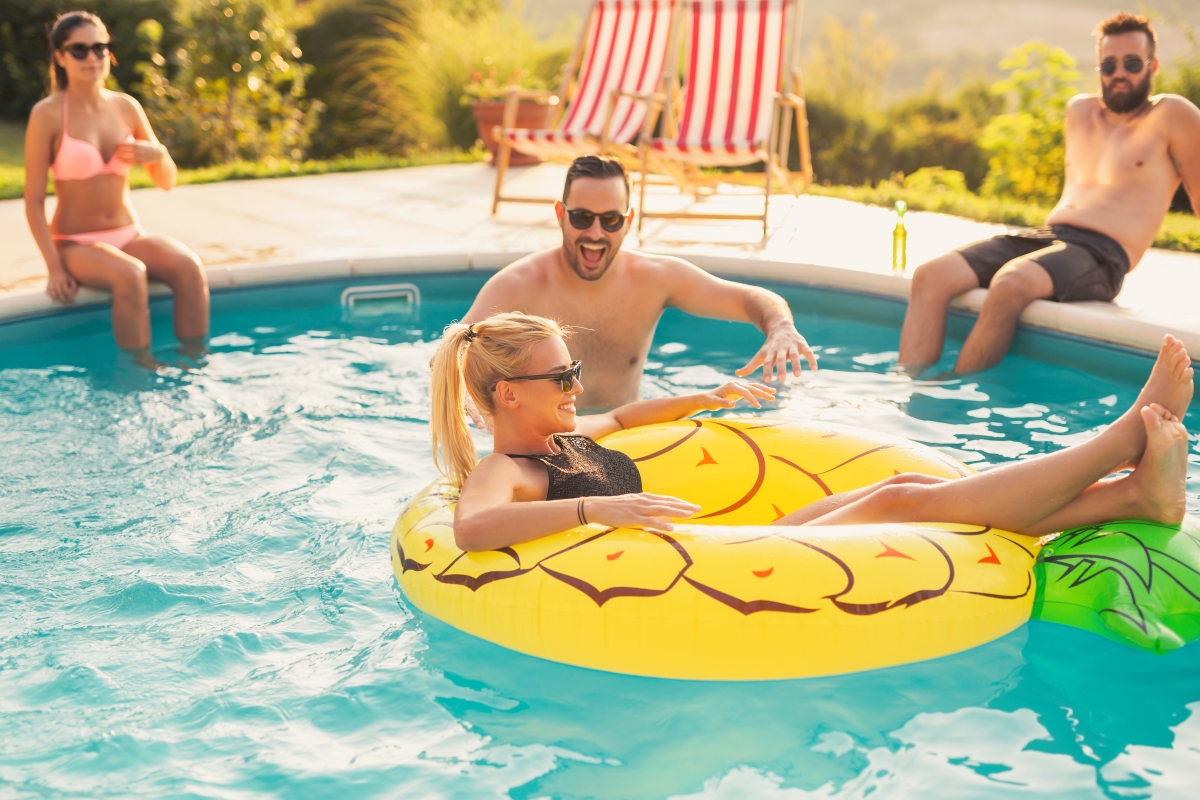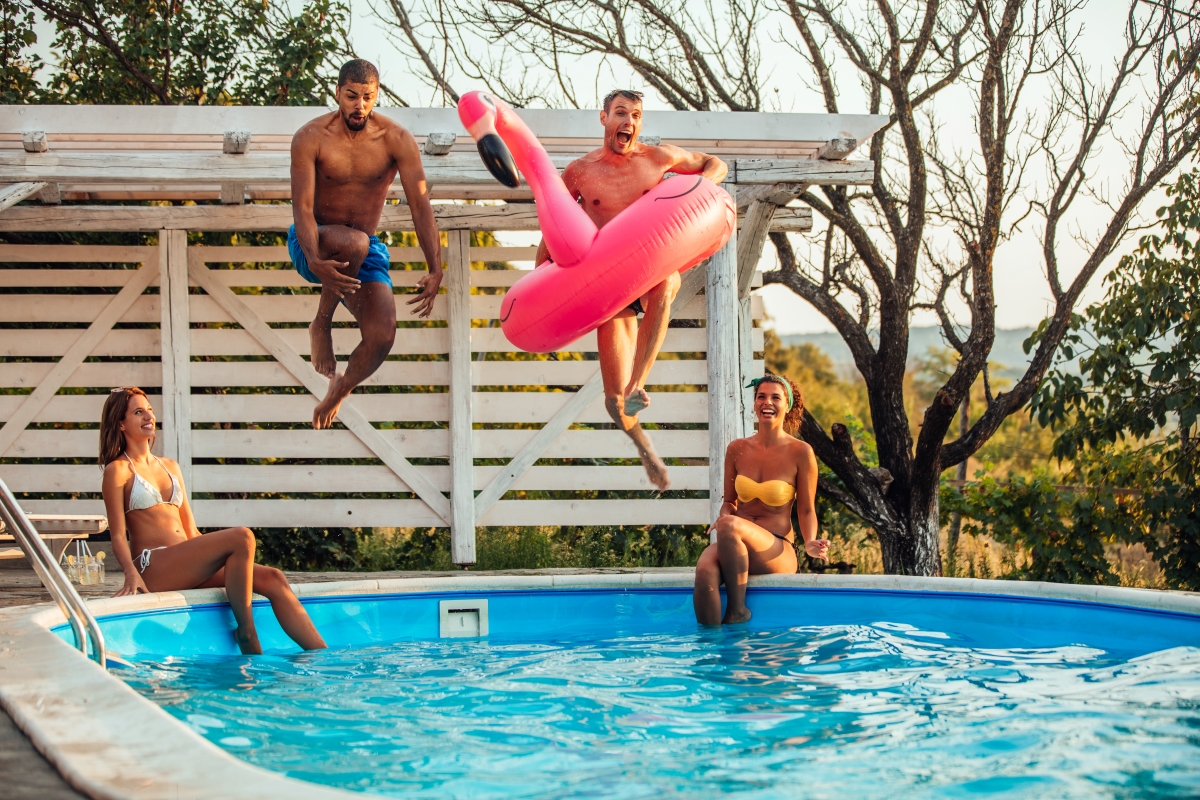When someone talks about “shocking” the pool, they quite literally mean zapping all the germs and bacteria floating around in it, but with a high dosage of chlorine, not electricity. This helps kill them off leaving the water crystal clear and sanitized. And regardless of whether the pool is run via a salt generator or traditional chlorine tablets, shocking a residential pool should be done on a weekly basis at the very least.
People may argue that the pool is already chlorinated and maintained, so why does it require additional weekly treatment? In fact, though chlorine is constantly working, the byproduct it leaves behind, known as chloramines, build up in the pool. Chloramines are also known as combined chlorine, which is essentially chlorine bonded to ammonia or nitrogen. Once bonded, the chlorine is then ineffective to do its job as a pool sanitizer. Chloramines can also cause eye burn and add a pungent chlorine odor to the water.
Shocking helps break apart these chloramines and free the chlorine to go back to an active state. The additional free chlorine also helps attack bacteria, pathogens, and algae. Even well-maintained pools still need an additional boost to help keep it on track. This is particularly helpful after a party with a high bather load, a fecal or blood accident, or a rainstorm.
“[Even with] maintaining a normal chlorine residual of one to four parts per million, contaminants can still build up in the pool and, and so on a regular basis it’s a good idea to just really up your dosage at a higher concentration of chlorine to kill things that are harder to kill and to oxidize things that are harder to oxidize,” says Ellen Meyer, product safety and government affairs manager at Solenis.
Salt-generated pools also benefit from a weekly shock treatment. Despite misconceptions that salt-generated pools differ because they do not use chlorine tablets, chlorine is still being delivered on-site through the salt generator and also subject to high amounts of chloramines, bacteria, pathogens, and algae.
“A salt pool is a chlorine pool,” Meyer emphasizes. As long as the generator is properly sized for the pool and maintaining a one-to-four parts per million ratio of chlorine, then the pool should be sanitized properly, she says. However, she notes that sometimes homeowners are sold a generator that’s too small for the size of the pool, requiring more chlorine to be added to ensure the ratio is maintained. In that case, shock is even more essential, though she advises that a properly fit generator be the first solution in line.
To maintain proper chlorine levels, shocking the pool once a week (or more, after a larger bather load or accident) will keep the pool clean and safe, like a deep-cleaning of the pool. Shock products are designed for this purpose. Shock product dosages vary widely, but chlorine dosages as high as 10 ppm may be needed for pools with significant contamination.
Calcium hypochlorite (or Cal Hypo) is the best type to use because this granular product can be added directly to the water, and it dissolves quickly. Meyer advises scattering the product across the pool, so it does not clump in one area. A trichlor tablet is not suitable because to shock properly, the chlorine concentration needs to be ramped up quickly and trichlor dissolves slowly.
The best time of day to shock the pool is at night, when no one is expected to swim, and to let the shock work overnight. Because the sun can also degrade chlorine faster, nighttime is more ideal to allow the shock to do its work.
In the morning, Meyer says, test the water to ensure the chlorine levels are back to one-to-four million parts per million before allowing anyone to enter the pool. If it’s still high, the pool still needs some time.
Common mistakes that occur is usually due to not reading instructions carefully, Meyer says. When people call the Solenis hotline, it is usually related to people not spreading the product across the entire pool but dumping it in one place. She also says people also call in complaining that their pool liner is bleached. Again, she says that usually occurs because the calcium hypochlorite is left in a pile at the bottom of the pool. To avoid piles, people should brush the product off the bottom and let it dissolve in the water. Another common mistake is not adding enough product.
“The label directions will tell you how much to do, how to add it, and what you need to do as far as distributing it,” Meyer says.
And if it takes a while for the chlorine levels to come back down, there are products that help balance it back out, such as hydrogen peroxide. But on a hot day, the sun usually takes care of it.
To learn more about how you can achieve sparkling clear water all season long, visit Solenis.


